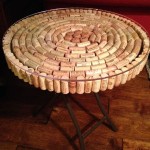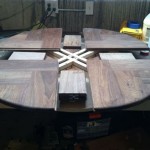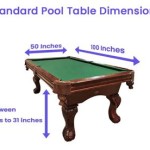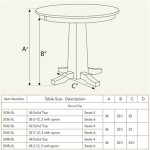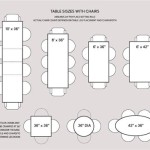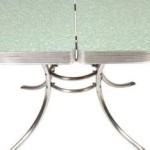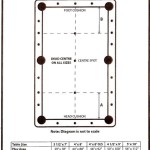The Enduring Appeal of the Wood Stump Side Table
The wood stump side table, a rustic yet versatile furniture piece, has witnessed a resurgence in popularity in recent years. Its raw, organic aesthetic seamlessly integrates into diverse interior design styles, ranging from minimalist modern to bohemian chic. Beyond its visual appeal, the wood stump side table offers a functional and sustainable option for adding character and utility to living spaces.
This article will explore the various aspects of the wood stump side table, encompassing its material sourcing, design considerations, practical applications, and maintenance, providing a comprehensive understanding of its enduring appeal and how it can be incorporated into various living environments.
Material Sourcing and Preparation
The selection of wood is paramount in determining the quality and longevity of a wood stump side table. A variety of wood species can be employed, each offering unique characteristics in terms of grain pattern, color, and durability. Common choices include oak, maple, walnut, cedar, and pine. Oak, known for its strength and distinctive grain, provides a classic and robust option. Maple offers a lighter hue and a smooth, refined texture, ideal for contemporary settings. Walnut, with its rich, dark tones and elegant grain, lends a touch of sophistication. Cedar is prized for its natural resistance to decay and insects, making it suitable for both indoor and outdoor use. Pine, a more affordable option, can be treated and finished to achieve a variety of looks.
Sustainable sourcing is a crucial consideration in the creation of wood stump side tables. Repurposing fallen trees, reclaimed wood from old structures, or wood sourced from sustainably managed forests minimizes environmental impact. Responsible forestry practices ensure that harvesting is conducted in a way that protects biodiversity and maintains the long-term health of the forest ecosystem. When selecting a wood stump side table, inquiring about the origin of the wood is essential for making an environmentally conscious choice.
Once the wood has been sourced, it requires proper preparation before being transformed into a functional table. This process typically involves several steps, including debarking, drying, and sometimes, stabilization. Debarking removes the outer layer of bark, which can harbor insects and contribute to decay. The drying process, whether air-drying or kiln-drying, reduces the moisture content of the wood, preventing warping, cracking, and splitting. Air-drying is a slower, more natural process, while kiln-drying utilizes controlled heat to accelerate moisture removal. Stabilization techniques, such as applying wood hardeners or sealants, can further enhance the durability and longevity of the stump.
The natural imperfections inherent in wood, such as knots, cracks, and variations in grain, are often embraced in the design of wood stump side tables. These imperfections contribute to the unique character and rustic charm of each piece, making it a one-of-a-kind addition to any space. However, excessively large or unstable cracks may require filling with epoxy resin or other stabilizing materials to ensure structural integrity.
Design Considerations and Customization
Wood stump side tables come in a diverse range of designs, reflecting the creativity of artisans and the preferences of consumers. The size and shape of the stump itself play a significant role in determining the overall aesthetic. Some tables retain the natural contours of the stump, showcasing its organic form, while others are carefully shaped and smoothed to achieve a more refined appearance. The height of the table is another important consideration, as it should be proportionate to the surrounding furniture and the intended use.
The finish applied to the wood stump side table can dramatically alter its appearance and protect it from damage. Various finishing options are available, including oils, waxes, varnishes, and paints. Natural oils, such as linseed oil or tung oil, penetrate the wood, enhancing its natural grain and providing a subtle sheen. Waxes create a protective layer on the surface, offering a soft, matte finish. Varnishes provide a durable, waterproof coating, ideal for high-traffic areas. Paints can be used to add color and personality to the table, complementing the existing décor.
Customization options abound for wood stump side tables, allowing individuals to create pieces that perfectly suit their specific needs and tastes. The top surface of the stump can be left natural or can be inlaid with materials such as glass, metal, or stone. Adding legs or casters can raise the table off the floor and provide greater stability or mobility. Carving intricate designs or incorporating metal accents can further personalize the table.
Integrating the wood stump side table into the existing décor requires careful consideration of color palettes, textures, and overall style. In minimalist modern settings, a sleek, simply finished stump can provide a touch of organic warmth. In bohemian or rustic interiors, a more natural, unadorned stump can contribute to the overall relaxed and eclectic atmosphere. The table can be paired with a variety of seating options, from upholstered sofas to woven chairs, creating a comfortable and inviting space.
Practical Applications and Maintenance
The versatility of the wood stump side table extends beyond its aesthetic appeal. It serves a variety of practical purposes in different areas of the home. In the living room, it functions as a convenient surface for placing drinks, books, or remote controls. In the bedroom, it can serve as a nightstand, providing a platform for lamps, alarm clocks, and personal items. In the entryway, it can act as a decorative accent table, displaying plants or artwork.
Beyond its indoor applications, the wood stump side table can also be used outdoors, on patios, decks, or in gardens. When used outdoors, it is essential to select a wood species that is naturally resistant to decay and insects, such as cedar or redwood. Applying a weather-resistant sealant or finish can further protect the table from the elements. Regular cleaning and maintenance are crucial for preserving its appearance and longevity.
Maintaining a wood stump side table is relatively straightforward. Regular dusting with a soft cloth helps to remove dirt and debris. Spills should be cleaned up promptly to prevent staining. Depending on the finish, occasional waxing or oiling may be necessary to maintain the wood's luster and protect it from drying out. Avoiding placing hot items directly on the surface is recommended to prevent heat damage. For outdoor use, covering the table during periods of inclement weather can prolong its lifespan.
Addressing common issues, such as minor scratches or dents, can often be done with simple home remedies. A paste of baking soda and water can be used to buff out superficial scratches. A damp cloth and a warm iron can be used to raise dents in the wood. For more significant damage, professional refinishing may be required. Regularly inspecting the table for signs of insect infestation or rot is also important, especially for outdoor pieces. Prompt treatment can prevent further damage and extend the table's lifespan.

Diy Natural Tree Stump Side Table Justinecelina

Large Stump Table Reclaimed

Diy Natural Tree Stump Side Table Justinecelina

Yangming 17 In H Light Brown Round Concrete Outdoor Accent Side Table Faux Wood Stump Stool Patio End Grain Finish Ympe Pa 35 The Home Depot

Wood Stump Side Table Pottery Barn Kids

Large Tree Stump Side Tables 1219 Black Bertuhome

Medium Height 20 Tall Cedar Stump Side Table New Zealand

Tree Stump Side Table

Over On Ehow Rustic Tree Stump Side Tables 17 Apart

Diy Natural Tree Stump Side Table Justinecelina

